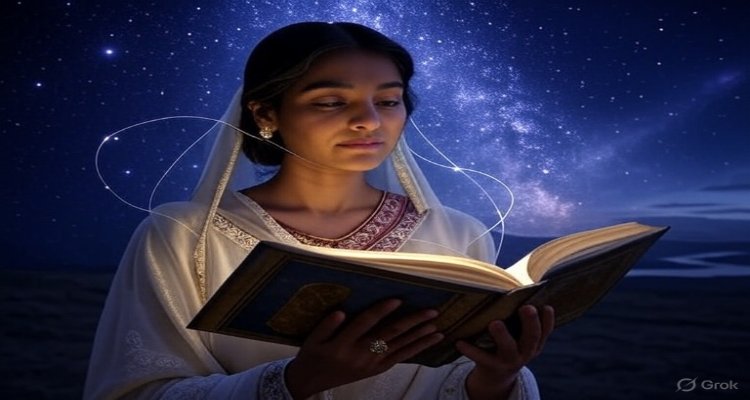Eternal Threads: From Gita to Galaxy
This article draws connections between philosophical texts and scientific concepts for educational and reflective purposes. It is not intended to suggest that scripture serves as a scientific manual, but rather as a source of cultural and philosophical insight.
Introduction (Hook)
In a world where ancient wisdom and cutting-edge science often seem worlds apart, a fascinating thread connects them—ideas of order, balance, and timeless truth. From the verses of the Bhagavad Gita that speak of duty, consciousness, and the eternal soul, to the galaxies studied by astrophysicists that stretch across billions of light-years, both realms search for answers to the same questions: Where did we come from? What holds the universe together? What is our role within it?
Context & Background
The Bhagavad Gita, a 2,000-year-old dialogue between Prince Arjuna and Lord Krishna, is often described as the spiritual DNA of India. It tackles questions of morality, existence, and cosmic order. Central to its philosophy is the idea of Dharma—the eternal duty that sustains life and the cosmos.
Fast forward to the present day, astrophysicists and cosmologists map the universe with telescopes and particle accelerators, seeking to decode the hidden forces—dark matter, dark energy, and gravity—that weave the universe together. In many ways, the Gita’s verses mirror the inquiries of modern science: both explore the invisible frameworks that sustain existence.
Main Developments
The parallel between scripture and science has gained attention in recent years, as scholars and scientists find striking resonances. For instance:
- The Eternal Soul vs. Energy Conservation: The Gita speaks of the soul as indestructible—“it is never born, nor does it die.” Physics echoes this in the principle of conservation of energy, which states that energy can neither be created nor destroyed, only transformed.
- Cosmic Order vs. Universal Laws: Krishna describes the universe as sustained by an eternal order (Rita), much like physicists view the cosmos as bound by unbreakable natural laws.
- Multiplicity of Worlds: The Gita references countless universes within creation—an idea uncannily aligned with today’s multiverse theories.
These parallels don’t suggest that the Gita predicted quantum mechanics or astrophysics, but rather that humanity’s quest for meaning—through philosophy or mathematics—converges at similar truths.
Expert Insight & Public Reaction
Dr. Subhash Kak, a computer scientist and Indologist, has often highlighted how Vedic literature resonates with quantum ideas. “The Gita does not describe equations, but it lays out a framework of consciousness that science is only beginning to understand,” he notes.
Astrophysicist Priya Natarajan adds: “While science doesn’t draw from scripture, it’s fascinating to see how different cultures have tried to answer cosmic questions. The Gita provides a poetic, ethical framework, while cosmology gives us empirical structure.”
Among the public, such connections inspire curiosity and pride. Many see the Gita as proof of ancient India’s deep philosophical insight, while others view these comparisons as a bridge between cultural identity and global science.
Impact & Implications
The merging of spiritual wisdom with scientific exploration is not about replacing one with the other, but about enriching our understanding. For students, thinkers, and seekers, this “thread” between the Gita and the galaxy encourages interdisciplinary learning. It urges us to see science not as cold mechanics, nor philosophy as abstract poetry, but as complementary lenses to explore existence.
As artificial intelligence, space travel, and quantum physics advance, humanity is once again asking timeless questions: What defines life? Where does consciousness begin and end? Is the universe a mechanical clockwork or a living web? The Gita’s answers may not be scientific, but they remain profoundly relevant—urging humans to align with duty, harmony, and higher purpose.
Conclusion
The phrase “Eternal Threads: From Gita to Galaxy” reflects more than metaphor; it captures humanity’s endless quest for truth. Across centuries, cultures, and disciplines, we have sought to decode the invisible connections binding existence. The Gita offers spiritual wisdom; cosmology offers scientific clarity. Together, they remind us that knowledge—whether ancient or modern—is part of one continuous fabric.
In the end, the journey from scripture to stars is not a contradiction but a continuum—an eternal thread woven through both human spirit and cosmic space.
Disclaimer: This article draws connections between philosophical texts and scientific concepts for educational and reflective purposes. It is not intended to suggest that scripture serves as a scientific manual, but rather as a source of cultural and philosophical insight.











